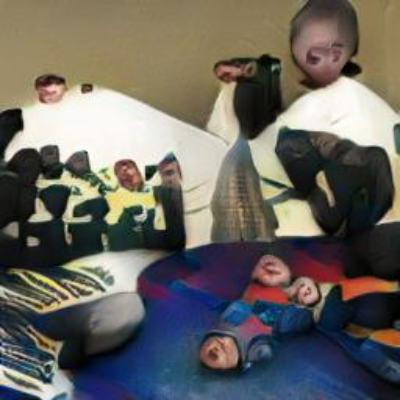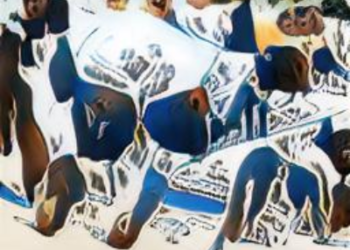The 2020 spirit of beauty is more inclusive than ever, too; from innovations in hyper-personalised products, to the boom of products servicing subjects previously considered taboo.
As we all become more at ease discussing subjects previously thought of as taboo, the market for personal care grows bigger and bigger.
Recently, Marylebone’s The Drug Store launched its Tackling Taboos seminar series, with the first instalment spotlighting the subject of sexual wellness.
Gen-Z boys online are chipping away at the taboo against men wearing makeup – with or without the makeup industry’s help
The online beauty boys community has chipped away at the taboo against men wearing makeup, mostly without support or publicity from major cosmetics companies.
«For men, every time you put makeup on it’s a political movement, showing that it’s not taboo, that it’s normal and shouldn’t be looked at twice,» Ceretti says.
While the stigma around body hair is slowly being erased, facial hair remains taboo for cis women and even more complex to navigate if you’re trans feminine
Trésor Prijs is a trans femme person who flits between presenting themselves with and without a full beard, and she feels the negative connotations of females with facial hair has another sinister layer of taboo and prejudice when applied outside of the gender binary.
Even so, the Nue Co. ’s Prebiotic + Probiotic and Debloat Food + Prebiotic cocktail of digestive enzymes and prebiotics was not a taboo concept to consumers.

Soap may be an easier sell for the TikTok generation than dandruff shampoo, but Kevin Spite, a brand consultant, believes you can create a multimillion-dollar company around a taboo concept.
Body hair was so taboo, she says, that commercials didn’t even acknowledge that women had hair.
«There is nothing taboo when it comes to the human body,» says Dr Shereene Idriss, a dermatologist in New York.
Today, male make-up is one of the biggest beauty trends, and thanks to the influence of social media, it is no more a taboo.
Laura Schubert is the co-founder and CEO of Fur, a New York-based hair and skincare brand disrupting the taboo around body hair.
So I’ve always been interested in the taboo that surrounds it and where that taboo comes from, but one of the main reasons I started Fur is because I wanted to make those conversations easier to have.
It only seems that way because taboos are often uncomfortable for people to talk about, so it’s something that gets swept under the rug.
Extreme forms of beauty are some of the most beautiful manifestations of humanity’s obsession with pain and pushing the limits of the human form. » Beauty is Pain is a new Dazed Beauty series by writer Lexi Manatakis that traces the history of the world‘s most extreme body modifications while being an overarching interrogation of the philosophy of human pain and its link to beauty. »Physical difference frightens people in our culture more than anything else. » You can be aberrant as hell mentally, politically, socially, but do one little thing physically – put a bone in your nose – and boy, you’re in trouble!« For extreme body modification artist Fakir Musafar, physical beauty is the ultimate form of taboo. » From flesh-hook suspension, to tightlacing, extreme piercings, tattooing, and scarification , from the 1940s until last year, his body experimentations were artistic rebellions against a society unwilling to understand the body beyond its heteronormative definitions. » Dubbed the father of contemporary body modification, Musafar’s obsession with extreme body experiments came from the pure spiritual ecstasy they gave him, describing some of his most painful experiments as out of body experiences. » »I met what I felt was God,« he once told the San Francisco Chronicle. » Like the ultimate high, chasing this exact transcendence lead Musafar into a lifetime of body modifications from age 14. » He suspended himself from the roof by his nipples, tight laced his waist down to as tiny as 19 inches, and played a seminal role in the birth of contemporary piercing culture. » He also contributed academically to philosophical theory on ‘body play’ – a term he coined to describe his art, and also the title of his self-founded magazine that spotlighted experimental body subcultures across the globe. » In 1980, anthropologist Charles Gatewood dubbed Musafar an »astronaut of inner spaces« for the way in which he unflinchingly touched uncharted parts of the human psyche. » And Gatewood’s framing of Musafar was right, without the artist’s commitment to chasing the spirit through the body, it’s impossible to say if we would understand the inextricable, poetic links between beauty, fetish, pain and the body as we do today. » Below we delve head first into exactly how Musafar revolutionised and radicalised the concept of physical beauty. »

HIS LIFELONG OBSESSION WITH BODY PLAY BEGAN AS A CHILD Born Roland Loomis on 10 August 1930 in South Dakota, America, Musafar’s experience of transcendence started as a child. » »I remember as far back as four or five years old being a little bit different than other people,« he reflected in an interview with Body Modification Ezine. »I wasn’t too aware of it then, not until I got a little older and got into school. » At that stage a lot of strange phenomena occurred in my life. » I would go into trance states very easily and I learned at a very early age to just automatically go into lucid daydreams and could live a life quite separate from the one I was living in my physical body, and then come back and do things I got from the lucid daydreams in my body. » « By the time he reached his teens, these lucid states pushed him to experiment with his body, the first Musafar body play being a piercing. » Sheltering himself from the 1940s widely held notion that piercings were taboo, Musafar performed his first piercing at the age of 14 in the cellar of his parent’s South Dakota home and this initial piercing began a string of secret body modifications in the same basement. » »Roland was straight as an arrow, a total nerd before nerds were cool, with thick corduroy pants, suburban-style plaid cotton shirts with ink-stained pockets, and thick, bug-eyed glasses,« reflects long time friend and sex positivity artist Annie Sprinkle in Artforum. »But beneath his clothes lay a completely different story. » « An avid photographer at the time, the artist would tell his parents he was developing photos all the while he experimented with self-bondage, by tying himself with ropes, and sensory deprivation where he would suffocate and clench his skin with his mother’s clothes pins and super tight tights. » Even from a young age, Musafar craved a transcendence only pain could achieve, and would eventually embark on a lifelong interrogation of pain. » »When you get up frombed and stub your toe, you didn’t ask for it, you didn’t expect it, and it hurts, «Mufasar told the Sydney Morning Herald in 2018. »That’s pain. » When you push needles through your cheeks, it’s an intense sensation. »
«AS AN ESTEEMED BUSINESS MAN, MUSAFAR BEGAN BODY PLAY IN SECRET After high-school, between the 1950s and 60s, Musafar served as a Korean Veteran after which he went on to live a fairly normcore life as a Silicon Valley advertising executive. » But little known to his exterior life, while dominating the ad world, Musafar also started to widen his body experimentations in secret. » Advancing from piercings, Musafar began to play with flesh hook suspensions, where he suspended himself with ropes hooked to his nipples, and tight lacing corsetry where he made multiple attempts at shrinking his waist to its smallest size. » Eventually, the artist reached a 19-inch circumference. » For years, Musafar kept his experimentations hidden from the world for fear of the way society would brandish him. » »If people had known about my practices through my teenage years and during my 20s, they probably would’ve thrown me into a mental institution,« Musafar told the Dallas Observer. »It wasn’t acceptable. » « Unable to express his spirituality to the wider world, Musafar turned to the embrace of underground queer and BDSM communities where he could share his experimentations with other people and communicate his findings. » It was within the openness of these worlds that his work slowly started to move out of secrecy, and he changed his name to Fakir Musafar. » »We were all excluded from regular society, so we had something in common,« the artist reflected in the documentary Fakir Musafar My 60 Years of Body Play. »We were fighting for a common goal, and that was to be let alone, to be able to do what we wanted to do, not be thrown into mental institutions, harassed, bothered by authorities. »
«HE WAS INTEGRAL TO THE BIRTH OF MODERN PIERCING CULTURE Although commonplace today, until the 1990s, piercings were so taboo some were even illegal with authorities particularly targeting queer communities. » Seen as a physical form of rebellion against morality, according to Musafar in Body Modification Ezine, no one, apart from circus performers who pierced their tongues to wheel wagons around and make money, openly wore piercings until the late 1970s. » Musafar himself played a very big role in bringing piercings out of the dark, including hosting piercing parties when they were considered illegal, and being one of the only two people in the world who perform do genital piercings. » If you wanted a piercing done outside of the law, Mufasar was your man. » The artist credits West Hollywood in the mid 1970s as the birthplace of contemporary piercings, something he was there to witness and contribute to himself. » As he explains in an interview with Body Modification Ezine The first place openly doing piercings was a little store Musafar and his crew rented on Santa Monica Boulevard. » Musafar would fly down and pierce every weekend, where more people would want piercings than there were piercers. » According to Musafar, the most popular piercings were nipples and Prince Alberts From this tiny Santa Monica salon, piercings spread like wildfire in underground Los Angeles communities, uniting queer, straight, and fetish communities in the name of piercings, pain, and pleasure. » The artist also extended his work to New York, where he gave a lecture in 1981 and hosted »the first ever mixed genital piercing party« in the city at the house of Annie Sprinkle. » He continues in Body Modification Ezine that the next wave of piercings were 1970s punks, and that from there the art form spread to general youth culture. »
HE BROUGHT BODY MODIFICATION OUT OF TABOO Alongside Musafar’s extensive body modifications was an entire academic and journalistic career committed to bringing body play out of societal taboo through teaching and writing. » He achieved this through contributing to journals, interviews, documentaries, and by launching his own magazine Body Play in 1992. » Body Play was a quarterly publication that spotlighted global body modification communities across suspension, extreme corsetry, piercings, and branding. » The magazine also thoroughly documented the history of body modification, paying strong homage to the ancient cultures for whom body modifications were spiritual rituals. » Sadly, due to its radical content which mainstream advertisers and distributors refused to pay for, the magazine failed to secure enough funding to last beyond 1999. » In 1991, Musafar launched his very own piercing school in San Francisco. » Fakir Intensives taught his practises and findings to over 1,400 people around the world in the art of piercing and branding, and it still runs today even without Musafar. » With his teachings and writings, he hoped that extreme body modifications would attain their spiritual status, despite the ways in which he saw and discredited how such ritualis like piercings and tattoos have been commercialised through reality TV and the internet. » »The current ‘Body Modification Movement’ very often obscures the deeper values and self understanding behind the literal acts,« Musafar once explained to writer Paula Marie. »As long as the deeper meaning of the mods are suppressed in the body mod community, such mods will always be seen as fringe. » «Australia’s largest beauty festival, MECCALAND, is launching today in Sydney. »

From haircare products formulated for specific textures to complex multi-step skin care regimes, the market for beauty items continues to grow to accommodate consumers’ diverse needs. » But for a long time, there was a corner of the market that no one was targeting—pubic care products. » It’s not surprising in light of the taboo and stigma that surrounds body hair, even with the rise of the body positivity movement. »
Though Fur has grown exponentially since then as the first brand of its kind, Tung and Schubert have met their fair share of challenges along the way. » The business-savvy and resilient pair shared some of the experiences and advice that helped them master an untapped, taboo market. »
Euromonitor focused on three of the main trends driving today’s beauty business: anti-taboo health and beauty, a new era of male beauty and disruptive innovation. »
«Anti-taboo health» — such as sexual wellness; skin conditions, like acne or related to chronic diseases; hygiene; hair loss; women’s health, and cannabis — is a noted avenue for growth, according to Symons. »
Anti-taboo health comprises, as well, hygiene related to teens. » For the 15- to 19-year-old set, hygiene and cleanliness are of upmost importance. » «There are very few brands that are actually targeting the teen market in a non-gendered…way — just simple products that work,» Symons said. »
The text of this article was generated by the Breaking The Silence system that collected 11 news articles posted on the web from January 2019 to September 2020 and clustered for the taboo subjects related to beauty













































































